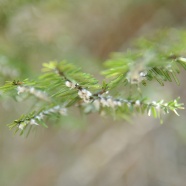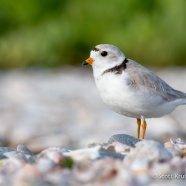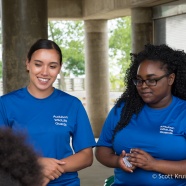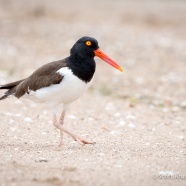Calling All Citizen Scientists: Help Protect Our Hemlock Trees!
Hemlock Woolly Adelgid (HWA) is an aphid-like insect, originating from Asia, which is devastating Hemlock trees throughout much of the Eastern United States. This deadly bug has been progressively moving closer to our area, and early detection of HWA is crucial to effectively managing its spread. This winter season we are once again conducting a series of field surveys in which the public is invited to join and work alongside conservationists from RTPI, the Chautauqua Watershed Conservancy and Jamestown Community College to monitor for the presence of this invasive pest. Want to get...
Read MoreHemlock Woolly Adelgid Citizen Scientist Training November 1st
Although autumn is just beginning here in Western New York, the winter season will soon be upon us. The colder months, November through March to be exact, is the perfect time of year to search the area’s forests for an invasive forest pest known as Hemlock Woolly Adelgid (HWA). HWA is an aphid-like insect, originating from Asia, which feeds off of the food storage cells below the needles of an Eastern Hemlock tree and hides itself under white woolly masses for protection. Within only a matter of 4-10 years an individual tree can succumb to an HWA infestation if left unnoticed. This deadly...
Read More2017 AAfCW Preliminary Results
Here is more great RTPI news from the shores of Connecticut via the Audubon Alliance for Coastal Waterbirds, a partnership between Audubon Connecticut, Connecticut Audubon Society, and the Roger Tory Peterson Institute of Natural History. Preliminary estimates of nesting success for our Piping Plovers and American Oystercatchers indicate we had another historic year. At the moment we believe 66 pairs of Piping Plovers fledged 100 chicks, with the pair total being the most all-time for Connecticut and the chicks the fourth highest total ever. Widespread nest washouts and predators certainly...
Read MoreWildLife Guards Alumni Leading
RTPI teamed up with Audubon Connecticut and the City of Bridgeport, Connecticut to run the 2015 and 2016 WildLife Guards program. We have expanded the very successful initiative to include the City of West Haven at the Sandy Point Important Bird Area in 2017. Both teams of WildLife Guards have been hard at work monitoring nesting birds and conducting stewardship concerning our beaches and ecosystems. Our crews do everything from removing invasive plants to learning about our local dragonfly populations, staying engaged in education, conservation and advocacy five days a week. We reach...
Read MoreAmerican Oystercatcher
I have been posting a lot about Piping Plovers in our work for the Audubon Alliance for Coastal Waterbirds, so I thought I should give our American Oystercatcher friends some love, too. After all, who doesn’t like their look? Even the average beachgoer takes note of this beautiful bird and its bold bill. Unfortunately a lot of storms and high tides have washed a number of Oystercatcher nests away from our beaches in Connecticut this spring. However, those that lost their eggs have been re-nesting. Our early totals are extremely promising despite these weather difficulties. We have hope...
Read More








